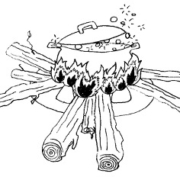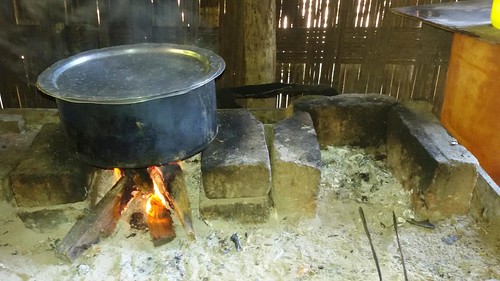Learning from the Three Stone Fire
As with any tool, the skill of the operator determines how well the work is accomplished. It takes years to learn how to use a hammer or shovel. The Three Stone Fire can be effective and clean or it can be very dirty and wasteful. In some kitchens, large fires use a lot of wood and make a great deal of smoke. Small fires are also made that cook food relatively cleanly.
Watching indigenous experts cook with fire has led to a better understanding of improved biomass fuel use. Cooks who are trying to conserve wood tend to burn the wood at the tip of the stick making flames. Knowledgeable cooks only need a small, hot fire close to the pot to boil water.
Improving upon a well-made Three Stone Fire has been more difficult than expected. Learning from expert users helped teach engineers how to make better stoves. Well-constructed Three Stone Fires protected from the wind and tended with care, score between 20% and 30% thermal efficiency. Open fires made with moister wood and operated with less attention can score as low as 5%.
When Tami Bond achieved 33% thermal efficiency with a Three Stone Fire, ARC started to depend on the pot skirt with a 6mm channel gap to help folks use less fuel to cook food. Expertise with the Three Stone Fire is an important skill that empowers the cook and has to be respected.





Leave a Reply
Want to join the discussion?Feel free to contribute!